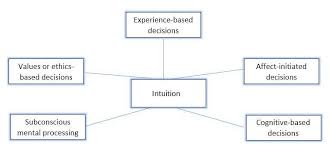Effective Decision Making Strategies: Making the Right Choices
Decision making is an integral part of our daily lives. From choosing what to wear in the morning to making important career or personal decisions, we are constantly faced with choices. However, not all decisions are easy to make, and sometimes we find ourselves feeling overwhelmed or unsure about which path to take.
The good news is that there are various strategies and techniques that can help us make better decisions. By understanding and implementing these strategies, we can improve our decision-making skills and increase the likelihood of making the right choices.
Define Your Objective
Before making any decision, it’s crucial to clearly define your objective. What do you hope to achieve? What outcome are you aiming for? By having a clear understanding of your goal, you can align your decision-making process accordingly.
Gather Information
An informed decision is often a better decision. Take the time to gather relevant information about the options available to you. This could involve conducting research, seeking advice from experts or trusted individuals, or analyzing data and statistics. The more information you have, the better equipped you will be to make an informed choice.
Identify Alternatives
Avoid limiting yourself to just one option. Instead, brainstorm and identify multiple alternatives. This widens your perspective and allows for a more comprehensive evaluation of each option’s pros and cons.
Evaluate Pros and Cons
Weighing the advantages and disadvantages of each alternative is essential in decision making. Create a list or use a decision matrix to compare the pros and cons of each option objectively. Consider factors such as feasibility, potential risks, long-term implications, and alignment with your values and priorities.
Consider Intuition and Gut Feelings
While data and analysis are important, don’t discount the power of intuition. Sometimes, your gut feeling can provide valuable insights that logic alone cannot capture. Trust your instincts but use them in conjunction with rational thinking.
Seek Different Perspectives
Another effective strategy is to seek input from others. Consult with individuals who have experience or expertise in the area related to your decision. Their insights and different perspectives can help you see things from a new angle and uncover blind spots you may have missed.
Test With Small Steps
If possible, consider testing your decision with small steps before committing fully. This allows you to gauge the feasibility and potential outcomes of your choice without diving headfirst into a major commitment.
Learn From Past Decisions
Reflect on past decisions and their outcomes. Identify patterns or mistakes you may have made previously and learn from them. This self-reflection helps refine your decision-making skills over time.
Embrace Flexibility
Be open to adapting and adjusting your decisions as new information arises or circumstances change. Sometimes, the best decisions are those that can be modified or reversed if necessary.
Take Action
Ultimately, a decision is only valuable if it leads to action. Once you have carefully evaluated your options, make a choice and take action confidently.
In conclusion, effective decision making requires a combination of logical analysis, intuition, gathering information, considering different perspectives, and learning from past experiences. By implementing these strategies, you can enhance your decision-making skills and increase the likelihood of making choices that align with your objectives and lead to positive outcomes.
7 Effective Decision-Making Strategies for Clearer Choices
- Define your goal and clarify what you want to achieve.
- Gather relevant information and consider different perspectives.
- Identify potential alternatives or options.
- Evaluate the pros and cons of each alternative.
- Consider the potential risks and uncertainties involved.
- Trust your intuition but also rely on logical reasoning.
- Make a decision based on the best available information.
Define your goal and clarify what you want to achieve.
Defining your goal and clarifying what you want to achieve is a crucial step in effective decision making. By clearly understanding your objective, you create a solid foundation for evaluating options and making choices that align with your desired outcome. Whether it’s a personal or professional decision, taking the time to define your goal provides clarity and focus, allowing you to make decisions that are in line with your values and priorities. It helps you stay on track and ensures that your decisions contribute to your overall vision of success. So, before diving into the decision-making process, take a moment to define your goal and gain a clear understanding of what you want to achieve.
Gather relevant information and consider different perspectives.
One crucial tip in decision making strategies is to gather relevant information and consider different perspectives. By actively seeking out information related to the decision at hand, you can ensure that you have a comprehensive understanding of the options available to you. Additionally, considering different perspectives allows you to gain valuable insights and alternative viewpoints that may challenge your assumptions or reveal new possibilities. This combination of information gathering and perspective-taking empowers you to make more informed decisions that take into account a broader range of factors and considerations.
Identify potential alternatives or options.
When it comes to decision making, one crucial tip is to identify potential alternatives or options. By expanding our perspective and considering multiple choices, we open ourselves up to a wider range of possibilities. This step allows us to explore different paths, evaluate their pros and cons, and ultimately make a more informed decision. Identifying alternatives helps us avoid tunnel vision and ensures that we consider all available options before settling on the best course of action.
Evaluate the pros and cons of each alternative.
When it comes to decision making, evaluating the pros and cons of each alternative is a crucial step. By carefully weighing the advantages and disadvantages of different options, you can gain a clearer understanding of their potential outcomes. This process allows you to objectively assess the benefits and drawbacks associated with each alternative, enabling you to make a more informed decision. Evaluating the pros and cons helps you consider various factors such as feasibility, risks, long-term implications, and alignment with your values and priorities. Ultimately, this strategy empowers you to make decisions that are well thought out and aligned with your goals.
Consider the potential risks and uncertainties involved.
When making decisions, it is important to consider the potential risks and uncertainties involved. While it can be tempting to focus solely on the benefits and positive outcomes of a decision, understanding the potential risks is crucial for making an informed choice. By carefully evaluating the potential risks and uncertainties associated with each option, you can assess whether you are willing to accept those risks or if there are ways to mitigate them. This consideration allows you to make decisions that are not only aligned with your objectives but also take into account the potential challenges and uncertainties that may arise along the way.
Trust your intuition but also rely on logical reasoning.
When it comes to decision making, it is important to strike a balance between trusting your intuition and relying on logical reasoning. While intuition can provide valuable insights and gut feelings, logical reasoning helps us evaluate options objectively and consider the practical aspects of our choices. By combining both approaches, we can make more well-rounded decisions that take into account both our instincts and rational thinking. Trusting your intuition allows for creativity and tapping into subconscious knowledge, while logical reasoning ensures a thorough analysis of the situation. Ultimately, finding the right balance between intuition and logic leads to more informed and confident decision making.
Make a decision based on the best available information.
When it comes to decision making, one crucial tip is to base your choices on the best available information. In order to make informed decisions, it’s important to gather as much relevant and reliable information as possible. This could involve conducting research, seeking advice from experts, or analyzing data and statistics. By making decisions based on the best available information, you increase the chances of making choices that are well-informed and have a higher likelihood of success. It helps you minimize uncertainties and make more confident decisions that align with your goals and objectives.




